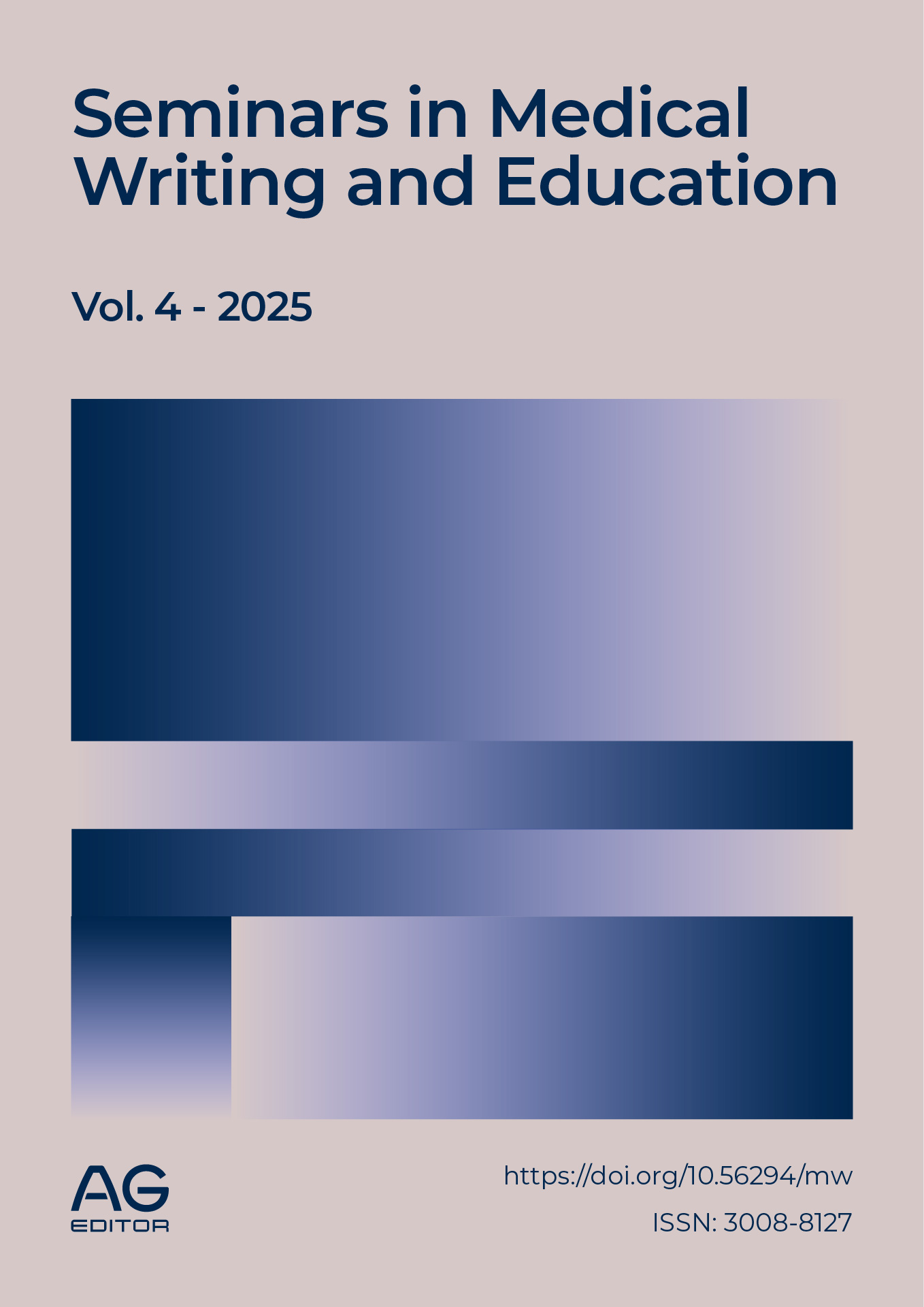Artificial Intelligence in the Intensive Care Unit: Present and Future
DOI:
https://doi.org/10.56294/mw2025464Keywords:
Artificial Intelligence, Intensive Care Unit, Critical Medicine, Machine Learning, Precision MedicineAbstract
Introduction: Artificial intelligence (AI) is significantly transforming critical medicine and intensive care. Its ability to process large volumes of data and generate accurate predictions has improved medical decision-making, optimizing diagnosis, treatment, and reducing the workload of healthcare personnel. Methodology: A literature review was conducted between November 2024 and February 2025, consulting databases such as SciELO, LILACS, Scopus, PubMed-MedLine, Google Scholar, and ClinicalKeys. Original articles, case reports, and open-access systematic reviews from the last 5 years were selected, using descriptors in Health Sciences (DeCS) and Boolean operators for the search. Development: Current applications of AI in the ICU include: Monitoring and early detection of adverse events using sensors and machine learning algorithms; diagnosis and prognosis through deep neural networks for medical image interpretation; treatment optimization, including adjustments in mechanical ventilation and pharmacogenomics; efficient management of hospital resources. The future of AI in critical care is oriented towards more explanatory and transparent systems, personalized precision medicine, integration with emerging technologies and automation of clinical processes. Conclusions: Artificial intelligence (AI) is redefining care in intensive care units, improving diagnostic accuracy, optimizing treatments, improving clinical decision-making and thus allowing more efficient hospital management. However, as advanced as it is, it will never replace the empathy and clinical judgment of healthcare professionals. By integrating AI responsibly, we not only save more lives, but we also humanize critical patient care, always remembering that, at the heart of intensive medicine, there is compassion and commitment to each patient.
References
1. Luviano García JA. Reseña del LI Congreso Nacional de Medicina Crítica y Terapia Intensiva. Acapulco, Guerrero, México, 2024 Palacio Mundo Imperial Del 8 al 13 de noviembre del 2024. Medicina Crítica. 2024;38(6):524–5. Disponible en: https://doi.org/10.35366/119243
2. Quintero Villareal A. «Juntos somos más». Federación Panamericana e Ibérica de Medicina Crítica y Terapia Intensiva (FEPIMCTI). Acta Colombiana de Cuidado Intensivo. julio de 2023;23(3):229–30. Disponible en: https://doi.org/10.1016/j.acci.2023.03.003
3. Pulgarin Fernánde CM. Generalidades de la medicina crítica o intensivista. RECIAMUC. el 30 de abril de 2019;3(1):376–94. Disponible en: https://doi.org/10.26820/reciamuc/3.(2).abril.2019.376-394
4. Microsoft Azure. Inteligencia artificial frente a aprendizaje automático [Internet]. [citado 2025 Feb 23]. Disponible en: https://azure.microsoft.com/es-es/resources/cloud-computing-dictionary/artificial-intelligence-vs-machine-learning/
5. Nin Vaeza N, Gonzalez Benzano M, Castro López R. Utilización de la inteligencia artificial en cuidados intensivos. ARS med. el 6 de junio de 2024;49(2):3–6. Disponible en: http://dx.doi.org/10.11565/arsmed.v49i2.2070
6. Elhazmi, A., A. Al-Omari, H. Sallam, et al. Función del algoritmo de árbol de decisiones de aprendizaje automático para predecir la mortalidad en pacientes adultos con COVID-19 gravemente enfermos ingresados en la UCI. J. Infect. Public Health . 15(7):826–834, 2022. Disponible en: https://doi.org/10.1016/j.jiph.2022.06.008
7. Gálvez-Vila RM, Espinosa-Goire Y, Padilla-González JM, Benavides-Jiménez A. Aplicaciones de la inteligencia artificial en la Medicina intensiva. Gac méd estud [Internet]. 2025 Ene 3 [citado 2025 Feb 23];6(1):e532. Disponible en: https://revgacetaestudiantil.sld.cu/index.php/gme/article/view/532
8. Komorowski M. Artificial intelligence in intensive care: are we there yet? Intensive Care Med. septiembre de 2019;45(9):1298–300. Available at: https://doi.org/10.1007/s00134-019-05662-6
9. Shashikumar SP, et al. Early Detection of Sepsis Using Machine Learning. Crit Care Med. 2018;46(5):687-693.
10. Rojas JC, et al. Predicting Ventilator Needs Using AI. Am J Respir Crit Care Med. 2020;202(4):568-574.
11. Vincent JL, et al. Predicting ICU Resource Use with AI. J Crit Care. 2021;62:172-178.
12. Rudin C. Stop explaining black box machine learning models for high stakes decisions and use interpretable models instead. Nat Mach Intell. 2019 May 13;1(5):206–15. Available at: https://doi.org/10.1038/s42256-019-0048-x
13. Collins FS, Varmus H. A New Initiative on Precision Medicine. N Engl J Med. 2015 Feb 26;372(9):793–5. Available in: https://doi.org/10.1056/nejmp1500523
14. Chan HP, et al. Deep Learning in Medical Imaging. Med Phys. 2020;47(3):e48-e62.
15. Davenport T, Kalakota R. The potential for artificial intelligence in healthcare. Future Healthcare Journal. 2019 Jun;6(2):94–8. Available at: https://doi.org/10.7861/futurehosp.6-2-94
16. Topol EJ. High-performance medicine: the convergence of human and artificial intelligence. Nat Med. 2019 Jan;25(1):44–56. Available at: https://doi.org/10.1038/s41591-018-0300-7
17. Pinsky MR, Dubrawski A, Clermont G. Intelligent clinical decision support. Sensors (Basel) [Internet]. 2022;22(4):1408. Available at: http://dx.doi.org/10.3390/s2204140
18. Kołodziejczak MM, Sierakowska K, Tkachenko Y, Kowlski P. Artificial intelligence in the intensive care unit: Present and future ina the COVID-19 era. J Pers Med [Internet]. 2023;13(6):891. Available at: http://dx.doi.org/10.3390/jpm13060891
19. Kim KA, Kim H, Ha EJ, Yoon BC, Kim D-J. Artificial intelligence-enhanced neurocritical care for traumatic brain injury : Past, present and future. J Korean Neurosurg Soc [Internet]. 2024;67(5):493–509. Available at: http://dx.doi.org/10.3340/jkns.2023.0195
20. Shickel, B., Loftus, T.J., Adhikari, L. et al. DeepSOFA: A Continuous Acuity Score for Critically Ill Patients using Clinically Interpretable Deep Learning. Sci Rep 9, 1879 (2019). https://doi.org/10.1038/s41598-019-38491-0
21. Contreras, Miguel et al. “APRICOT-Mamba: Acuity Prediction in Intensive Care Unit (ICU): Development and Validation of a Stability, Transitions, and Life-Sustaining Therapies Prediction Model.” Research square rs.3.rs-4790824. 6 Aug. 2024. https://doi.org/10.21203/rs.3.rs-4790824/v1
22. Verma AA, Stukel TA, Colacci M, Bell S, Ailon J, Friedrich JO, et al. Clinical evaluation of a machine learning–based early warning system for patient deterioration. CMAJ. 2024 Sep 16;196(30):E1027-37. https://doi.org/10.1503/cmaj.240132
Published
Issue
Section
License
Copyright (c) 2025 Jhossmar Cristians Auza-Santivañez, Ariel Sosa Remón, Freddy Ednildon Bautista-Vanegas , Ingrid Neysa Cabezas-Soliz, Ismael Vargas Gallego, Blas Apaza-Huanca, Jorge Márquez-Molina, Daniel Ramiro Elías Vallejos-Rejas (Author)

This work is licensed under a Creative Commons Attribution 4.0 International License.
The article is distributed under the Creative Commons Attribution 4.0 License. Unless otherwise stated, associated published material is distributed under the same licence.






